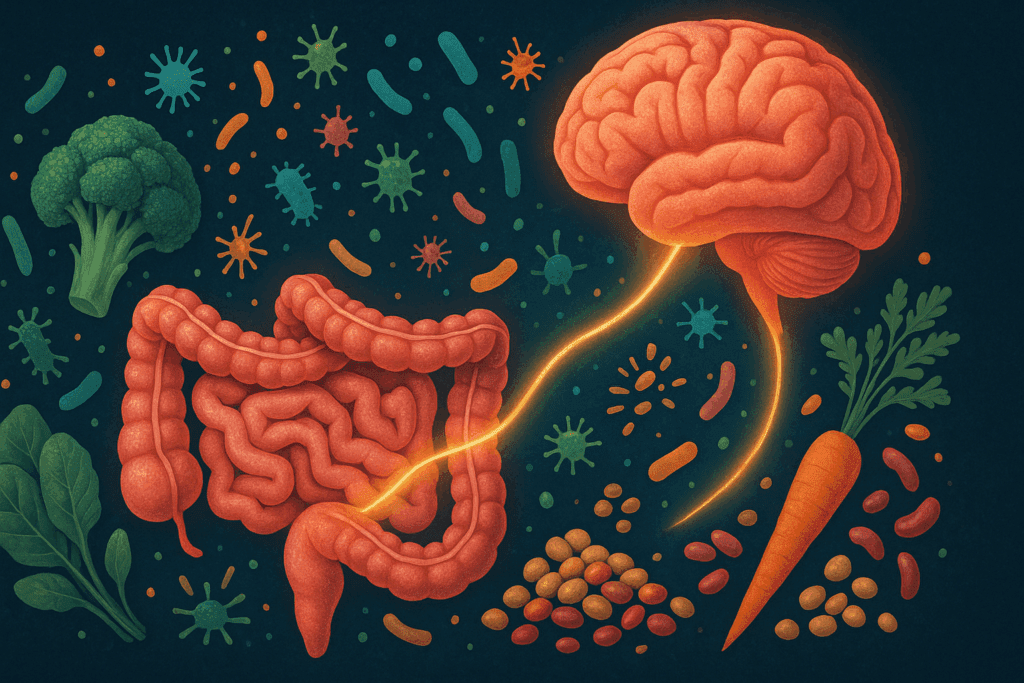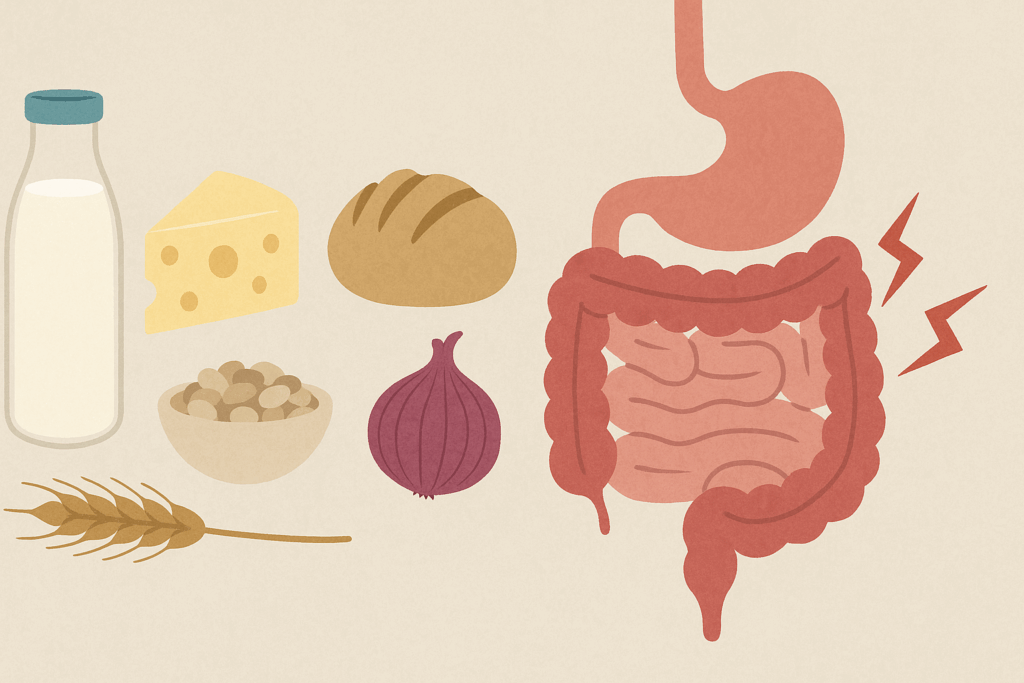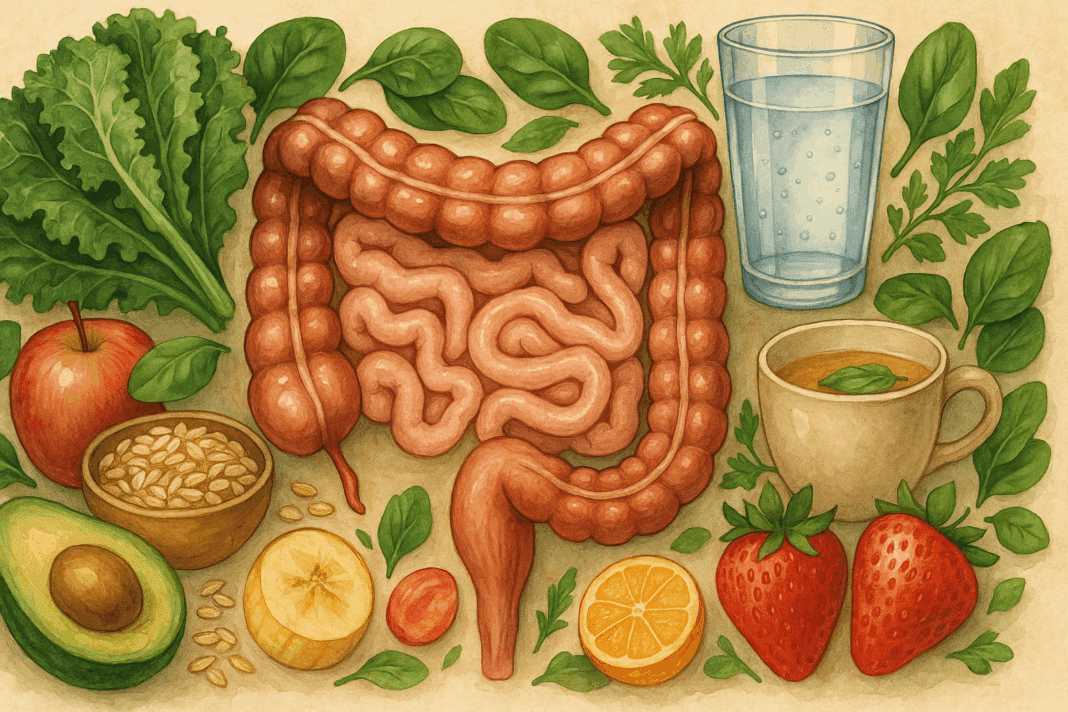Understanding how diet influences the lower digestive system is essential for those seeking to optimize wellness through nutrition. The lower digestive tract, which includes the small intestine, large intestine (colon), rectum, and anus, plays a central role in nutrient absorption, fluid balance, and waste elimination. When this system functions well, it supports immunity, reduces inflammation, and promotes regularity. Conversely, when the lower digestive tract is compromised by poor dietary habits, individuals often experience uncomfortable symptoms such as bloating, constipation, diarrhea, and even long-term gastrointestinal disorders. As scientific evidence continues to mount, the connection between dietary patterns and digestive health has become too compelling to ignore.
You may also like: Macronutrients vs Micronutrients: What the Simple Definition of Macronutrients Reveals About Your Diet and Health

The Role of the Lower Digestive System in Overall Health
The lower digestive system does far more than simply handle waste. It represents a complex and dynamic environment that houses trillions of microorganisms known collectively as the gut microbiota. These microbes interact intricately with the foods we consume, breaking down complex carbohydrates, synthesizing certain vitamins, and aiding in the development of the immune system. The colon, in particular, ferments undigested fibers to produce short-chain fatty acids (SCFAs), which have protective anti-inflammatory properties. When the diet is rich in fiber and plant-based compounds, the lower digestive tract tends to flourish, creating a healthier and more resilient gut ecosystem.
Moreover, the lower digestive system serves as a major communication hub with the brain through the gut-brain axis. A well-nourished digestive tract contributes to better cognitive performance, improved mood, and stress resilience. Disruptions in this system—often triggered by highly processed foods or diets low in essential nutrients—can impair this delicate communication, leading to a cascade of physical and emotional symptoms. By supporting the lower digestive tract with intentional dietary choices, we are investing not only in gut health but in systemic wellness.

How Fiber Shapes the Function of the Lower Digestive Tract
One of the most well-researched components of a gut-friendly diet is fiber. Soluble fiber dissolves in water and forms a gel-like substance, helping to slow digestion and promote a sense of fullness. Insoluble fiber, on the other hand, adds bulk to stool and facilitates regular bowel movements. Both types of fiber play a crucial role in maintaining a healthy lower digestive tract. Studies have consistently shown that diets high in dietary fiber are associated with a lower risk of colorectal cancer, diverticulosis, and inflammatory bowel diseases.
In practical terms, incorporating foods like legumes, oats, chia seeds, flaxseeds, leafy greens, and whole grains can significantly benefit lower digestive system function. These foods promote microbial diversity and encourage the production of SCFAs, which protect the mucosal lining of the colon and support efficient peristalsis—the rhythmic contractions that move food through the gut. Without adequate fiber, the lower digestive system can become sluggish, resulting in constipation and a buildup of toxins that may contribute to chronic inflammation.

The Importance of Hydration in Lower Digestive Health
While the focus is often placed on what we eat, hydration plays a similarly critical role in supporting the lower digestive tract. Water is essential for softening stool and allowing it to pass more easily through the colon. Chronic dehydration, even if mild, can lead to constipation, straining, and eventually hemorrhoids or anal fissures. Additionally, fluids support the mucus layer that protects the intestinal lining, reducing the risk of irritation and inflammation.
A diet rich in water-dense foods such as cucumbers, celery, watermelon, and oranges can complement regular fluid intake. Herbal teas and broths can also provide hydration without the downsides of caffeine or sugary beverages, which may irritate the digestive lining. Maintaining a consistent hydration routine is especially important for individuals who consume high-fiber diets, as fiber requires water to move smoothly through the lower digestive system. Without enough fluids, fiber can actually exacerbate digestive discomfort rather than relieve it.
How Fats Influence the Lower Digestive System
Fats often get a bad rap, but not all fats are created equal, especially when it comes to digestive health. Healthy fats from sources like olive oil, avocados, nuts, seeds, and fatty fish play an important role in stimulating bile production, which helps emulsify fats for easier absorption in the small intestine. Bile also aids in lubricating the lower digestive tract, facilitating smoother stool passage and reducing the likelihood of straining during bowel movements.
Moreover, certain fatty acids—particularly omega-3s—have been shown to possess anti-inflammatory properties that benefit the gut lining. Chronic inflammation in the lower digestive tract is implicated in conditions such as ulcerative colitis and Crohn’s disease, so incorporating anti-inflammatory fats may offer protective effects. However, excessive consumption of saturated fats and trans fats from processed and fried foods can disrupt the microbiota balance, reduce microbial diversity, and increase inflammation within the colon.

The Impact of Probiotics and Fermented Foods
Probiotics—live beneficial bacteria—have emerged as a cornerstone of digestive wellness. These microbes help repopulate the gut with species that aid in digestion, reduce harmful bacteria, and support immune function. Fermented foods such as yogurt, kefir, sauerkraut, kimchi, and miso are natural sources of probiotics and can be especially helpful for maintaining the health of the lower digestive tract. They contribute to microbial balance, improve stool consistency, and may alleviate symptoms associated with irritable bowel syndrome (IBS).
Incorporating fermented foods regularly into the diet can enhance the resilience of the lower digestive system. This is particularly important after antibiotic use, which often disrupts gut microbiota and leaves the digestive tract more vulnerable to inflammation and infection. Additionally, some probiotic strains are known to increase the production of SCFAs, thereby contributing to the integrity and health of the intestinal lining.
The Role of Prebiotics in Feeding a Healthy Gut
While probiotics introduce beneficial bacteria into the gut, prebiotics serve as the fuel for those microbes to thrive. Prebiotics are non-digestible fibers found in foods such as garlic, onions, leeks, asparagus, bananas, and artichokes. These compounds selectively stimulate the growth of beneficial bacteria in the colon, helping to maintain a balanced and diverse gut environment. A healthy lower digestive tract depends not only on the presence of good microbes but also on the availability of nutrients to sustain them.
Regular consumption of prebiotic-rich foods helps fortify the lower digestive system against pathogenic bacteria and promotes the release of metabolites that strengthen the intestinal barrier. This barrier is crucial in preventing substances such as toxins or undigested food particles from leaking into the bloodstream, a phenomenon known as “leaky gut,” which is associated with chronic inflammation and autoimmune conditions. By integrating both prebiotics and probiotics into the diet, individuals can synergistically support optimal gut health.
How Plant-Based Diets Support the Lower Digestive Tract
A growing body of evidence supports the notion that predominantly plant-based diets can significantly enhance lower digestive system health. These diets are typically rich in fiber, antioxidants, vitamins, minerals, and phytonutrients that create a favorable environment for gut microbiota. Additionally, plant-based eating patterns have been linked to lower levels of inflammation, improved regularity, and reduced incidence of diverticular disease and colon cancer.
Unlike animal proteins and fats, which can produce putrefactive compounds during digestion, plant foods tend to yield fermentation byproducts that are beneficial to the lower digestive tract. For example, a diet centered on legumes, whole grains, fruits, and vegetables fosters the production of butyrate, an SCFA known to protect against colon inflammation and support epithelial cell health. Importantly, a plant-forward approach does not necessarily require full vegetarianism; even modest increases in plant food intake can produce measurable improvements in gut health.

Understanding Food Intolerances and Their Impact on Digestion
Individual differences in food tolerance can also profoundly affect lower digestive system function. Common culprits include lactose, gluten, and certain fermentable carbohydrates known as FODMAPs. For individuals with sensitivities, these compounds can trigger symptoms like bloating, cramping, and altered bowel habits. Identifying and managing these intolerances through an elimination diet or diagnostic testing can help restore harmony to the lower digestive tract.
However, it’s important to approach dietary restrictions with caution. Completely eliminating large food groups without professional guidance can lead to nutritional imbalances and further complicate gut health. For example, individuals following a low-FODMAP diet should aim to reintroduce tolerable foods gradually to maintain microbial diversity. With careful planning and support from a registered dietitian or gastroenterologist, dietary adjustments can be used therapeutically to enhance digestive resilience without compromising overall nutrition.
The Hidden Risks of Highly Processed Foods
Modern diets are often saturated with ultra-processed foods that contain artificial additives, preservatives, emulsifiers, and refined sugars. These substances can disrupt the delicate microbial ecosystem of the lower digestive tract, promoting dysbiosis—a state of microbial imbalance that increases the risk of inflammation, gastrointestinal disorders, and metabolic disease. Furthermore, processed foods tend to be low in fiber and high in unhealthy fats, both of which can impair motility and compromise the integrity of the intestinal barrier.
Long-term consumption of a highly processed diet can lead to structural and functional changes in the colon, weakening its ability to manage waste and absorb nutrients efficiently. Emerging research also suggests that emulsifiers commonly found in processed foods may directly damage the mucus layer protecting the intestinal lining, leaving it more susceptible to pathogens and irritants. Reducing intake of these products and replacing them with whole, nutrient-dense alternatives is a foundational step in restoring lower digestive system function.
Why Consistency in Eating Habits Matters
Beyond the composition of one’s diet, the consistency and timing of meals also influence digestive health. Irregular eating patterns, excessive snacking, or eating too quickly can disrupt the natural rhythms of the lower digestive tract, impairing digestion and increasing the likelihood of bloating and discomfort. Conversely, establishing regular meal times and practicing mindful eating encourages more efficient enzymatic and hormonal responses that support healthy digestion.
Taking time to chew food thoroughly, eating in a relaxed setting, and allowing the body to fully process each meal can significantly ease the burden on the lower digestive system. In some cases, spacing meals to allow for the migrating motor complex—a wave-like motion that cleans the intestines between meals—can further enhance digestive efficiency. These habits, though often overlooked, provide essential support for a system that thrives on rhythm and balance.
Supporting the Lower Digestive System During Stress
The relationship between stress and gut health is increasingly recognized within both research and clinical practice. Psychological stress can alter gut motility, increase intestinal permeability, and shift microbial composition in ways that negatively impact the lower digestive tract. Conditions such as IBS often flare during periods of emotional or physical stress, suggesting a strong mind-gut connection.
Dietary strategies that support the gut during stress include the inclusion of anti-inflammatory foods, adaptogenic herbs, and nutrients that support nervous system regulation, such as magnesium and B vitamins. Additionally, stress management techniques—such as yoga, meditation, and adequate sleep—complement dietary interventions and can improve the resilience of the lower digestive system. A comprehensive approach that addresses both physical and emotional well-being is often the most effective way to restore and maintain digestive harmony.
Frequently Asked Questions: How Diet Impacts the Lower Digestive System
1. Can stress-related eating habits impact the lower digestive tract long-term?
Yes, they absolutely can. Emotional eating often leads to overconsumption of processed or sugary foods, which negatively affect the gut microbiome and cause disruptions in the lower digestive system. Chronic exposure to such dietary patterns can alter microbial diversity and weaken the mucosal barrier of the lower digestive tract. Over time, this may increase the risk for inflammatory conditions, including irritable bowel syndrome (IBS) or colonic dysbiosis. Incorporating mindful eating techniques and addressing stress through non-dietary methods can help break this cycle and protect lower digestive tract function.
2. How does intermittent fasting influence the lower digestive system?
Intermittent fasting can benefit the lower digestive tract by allowing extended periods of rest between meals, which supports the migrating motor complex—a crucial mechanism that cleanses the intestines. This rest may improve motility and reduce the likelihood of bacterial overgrowth in the lower digestive system. Some studies suggest fasting helps reduce inflammation in the gut and improves microbial balance. However, individuals with sensitive digestive conditions should approach fasting with caution and consult a gastroenterologist, as abrupt dietary shifts can sometimes exacerbate symptoms in the lower digestive tract.
3. Are there specific spices or herbs that enhance lower digestive system function?
Yes, several herbs and spices have been studied for their positive effects on the lower digestive tract. Ginger, turmeric, fennel, peppermint, and cumin are among those with known digestive benefits. These compounds can reduce gas, support peristalsis, and decrease inflammation within the lower digestive system. For example, peppermint oil has demonstrated efficacy in managing IBS symptoms by relaxing the smooth muscles of the colon. Including these herbs in meals or consuming them as teas may offer both immediate and long-term digestive support.
4. What role does meal timing play in maintaining a healthy lower digestive tract?
Meal timing helps regulate circadian rhythms that influence digestive enzyme production and gut motility. Eating meals at irregular intervals can disrupt these rhythms, potentially impairing nutrient absorption and peristalsis within the lower digestive system. Consistent mealtimes help maintain hormonal balance and optimize microbial patterns in the lower digestive tract. Additionally, spacing meals appropriately supports the migrating motor complex, preventing residue buildup in the intestines. For those with lower digestive issues, structured meal timing may serve as a low-effort strategy for symptom relief.
5. Can travel or environmental changes affect the lower digestive system even if diet remains the same?
Yes, environmental changes can significantly affect the lower digestive tract even when dietary intake is consistent. Factors such as changes in water quality, exposure to unfamiliar microbes, altitude shifts, and time zone disruptions can all influence gut motility and microbial balance. These alterations often manifest as temporary constipation or diarrhea due to the stress placed on the lower digestive system. Maintaining hydration, consuming familiar fermented foods, and packing shelf-stable prebiotic-rich snacks can mitigate these effects while traveling.
6. Are there warning signs that the lower digestive tract isn’t responding well to a specific diet?
Absolutely. Symptoms such as persistent bloating, irregular bowel habits, lower abdominal cramping, and visible changes in stool consistency may indicate that the lower digestive system is under strain. A new diet that limits fiber, lacks microbial diversity, or includes excessive artificial additives can compromise the lower digestive tract. Sudden shifts in gut health should be monitored, particularly if accompanied by fatigue or skin changes, which may signal malabsorption issues. It’s essential to track dietary responses over time and work with a healthcare provider to personalize nutritional strategies.
7. How do intense exercise routines affect the lower digestive tract?
Intense physical activity can have both positive and negative effects on the lower digestive system. While moderate exercise promotes bowel motility and supports microbiome diversity, high-intensity or endurance training may lead to temporary ischemia (reduced blood flow) in the lower digestive tract. This can result in symptoms like cramping, urgency, or diarrhea, especially during or after workouts. Athletes can support their lower digestive system by ensuring adequate hydration, spacing meals appropriately, and avoiding high-fat foods before training. Gradually building endurance can also reduce gastrointestinal stress over time.
8. What impact does aging have on the lower digestive system, and how should diet adapt accordingly?
As people age, the lower digestive tract undergoes changes such as reduced motility, enzyme production, and microbial diversity. These shifts increase the likelihood of constipation, nutrient deficiencies, and slower digestion. A diet adapted for aging adults should prioritize fiber-rich foods, hydration, and easily digestible proteins to maintain optimal lower digestive system function. Fermented foods and prebiotics can help preserve microbiota diversity, while smaller, more frequent meals may be better tolerated. Consulting a nutritionist specializing in geriatric health ensures dietary strategies evolve with physiological needs.
9. Do artificial sweeteners negatively affect the lower digestive tract?
Emerging research indicates that some artificial sweeteners may alter the gut microbiota in ways that negatively affect the lower digestive system. Substances like sucralose and saccharin have been shown to disrupt microbial diversity and promote inflammation in the lower digestive tract. Additionally, sugar alcohols such as sorbitol and xylitol can ferment rapidly in the colon, leading to bloating, gas, and diarrhea. While occasional use may be tolerated, regular consumption may compromise lower digestive system health. Choosing natural sweeteners like stevia in moderation or reducing sweetener use altogether may provide better long-term outcomes.
10. Are there innovative therapies on the horizon for enhancing lower digestive tract health?
Yes, emerging fields like microbiome-targeted nutrition, personalized probiotic therapy, and fecal microbiota transplantation (FMT) are gaining traction for improving the lower digestive system. Advances in microbiome sequencing now allow for tailored dietary interventions based on an individual’s unique gut profile. In the near future, synbiotics (combinations of prebiotics and probiotics), postbiotics (beneficial microbial metabolites), and even AI-powered meal planning could revolutionize how we support the lower digestive tract. These innovations reflect a growing emphasis on precision medicine for gut health, offering new hope for those with chronic lower digestive disorders.
Conclusion: Nourishing the Lower Digestive Tract for Lifelong Wellness
In conclusion, the intricate interplay between diet and the lower digestive system is a cornerstone of preventive health. By understanding how specific foods and dietary patterns influence this essential part of the body, individuals can make informed choices that foster a more resilient and efficient lower digestive tract. From the inclusion of fiber and hydration to the strategic use of probiotics and anti-inflammatory fats, each element contributes to a holistic foundation for digestive well-being.
Prioritizing whole, minimally processed foods and embracing plant-forward meals creates a supportive environment for the gut microbiota, which in turn enhances nutrient absorption, immunity, and emotional health. Just as importantly, developing consistent eating habits and recognizing the role of stress management reinforces the health of this vital system. The journey to better digestion begins with awareness and intentionality—empowering us to nourish the lower digestive system as a means of supporting lifelong vitality, comfort, and wellness.
When viewed through the lens of science and self-care, diet becomes far more than a source of calories; it becomes a therapeutic tool. In supporting the lower digestive tract naturally through food, we not only ease digestive discomfort but actively build the foundation for a healthier future.
Further Reading:
Upper vs. Lower GI Tract: What Are They?


